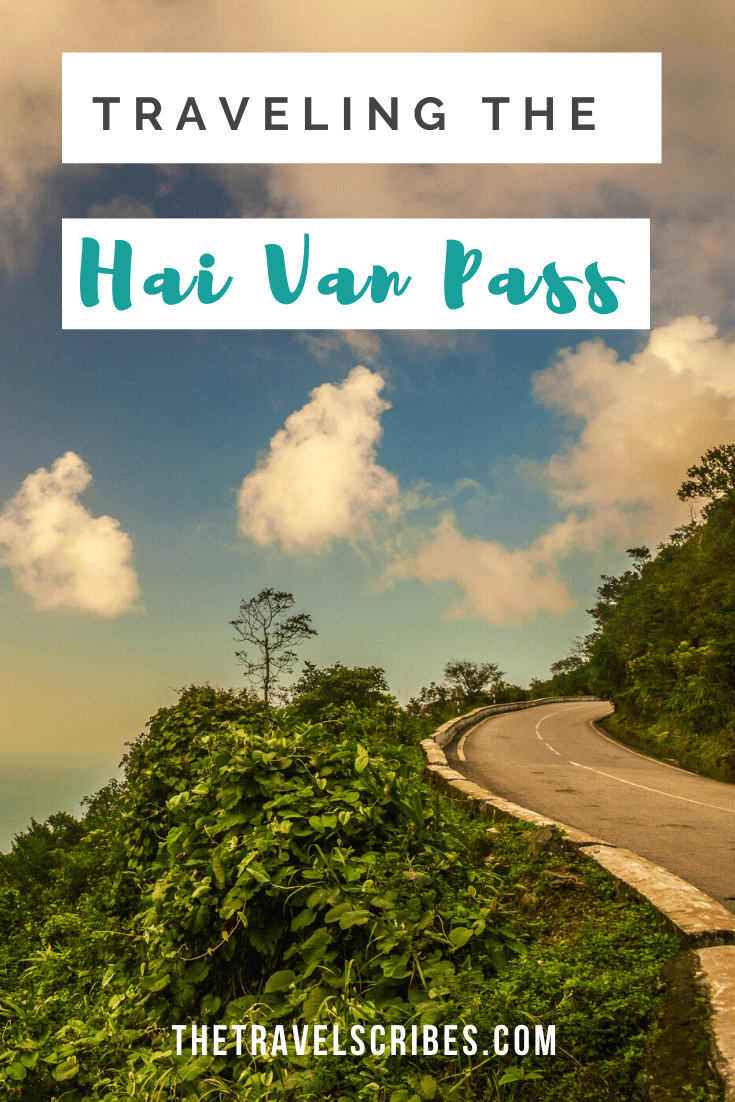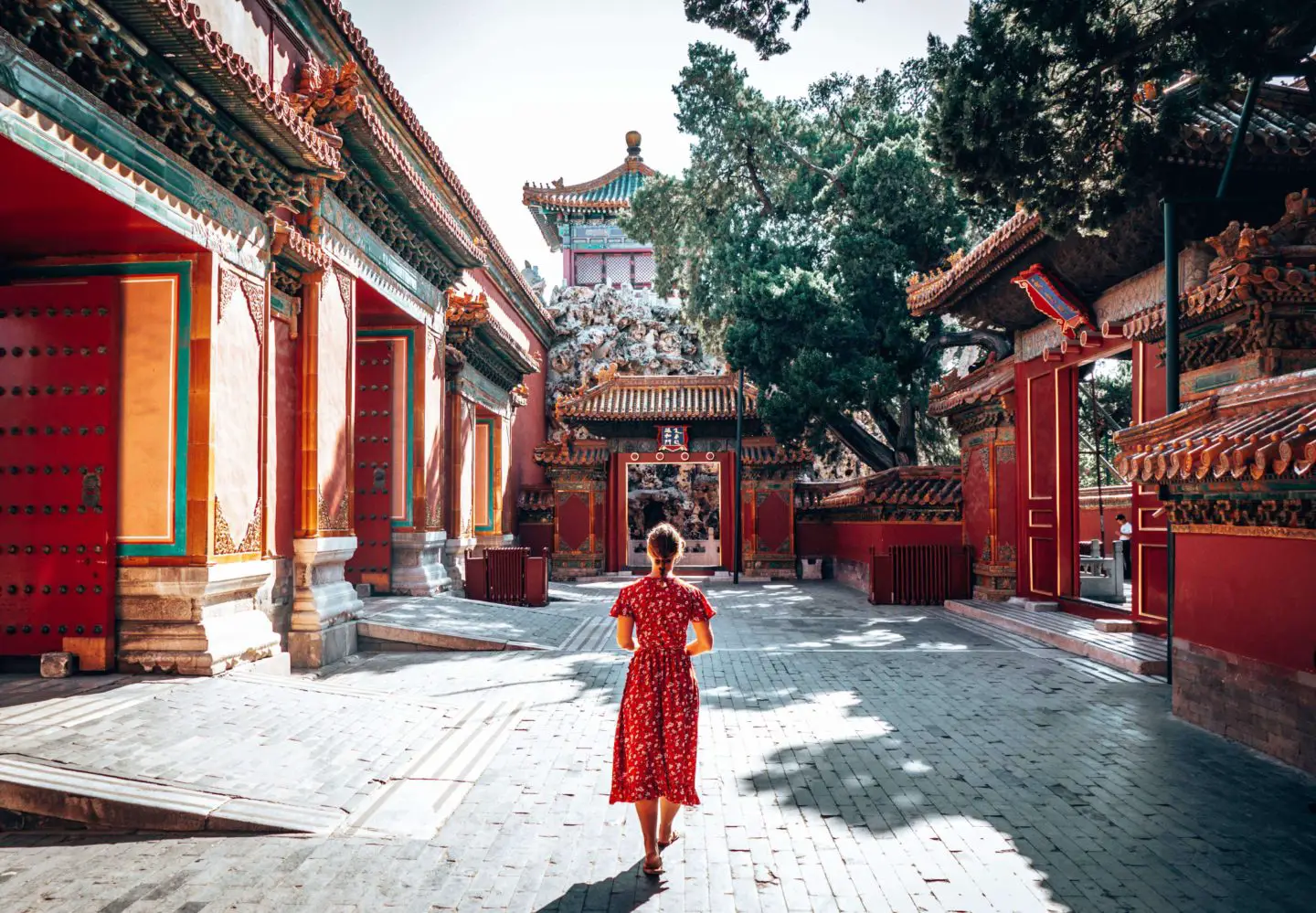If you’re making your way through Central Vietnam, inevitably you’re visiting Hue to see it’s iconic landmarks like the Imperial City and citadels, and Hoi An, the city recently voted the best to visit by Travel and Leisure magazine. And then, the question you’ll be asking yourself is: What’s the best way to get from Hue to Hoi An?
Before we made the trek, we spent hours reading reviews and speaking to other travellers, looking at different options. Jeep tours, private cars, busses, motorbikes: the options seemed almost endless.
However (spoiler alert), this article is going to make a strong case for ‘making like Top Gear’ and going via motorbike; either self-drive or easy rider. But, first we’ll walk you through the various options for travelling between Hue and Hoi An, and then, once you’re convinced the only way is via bike, we’ll share our full itinerary for doing the trip.
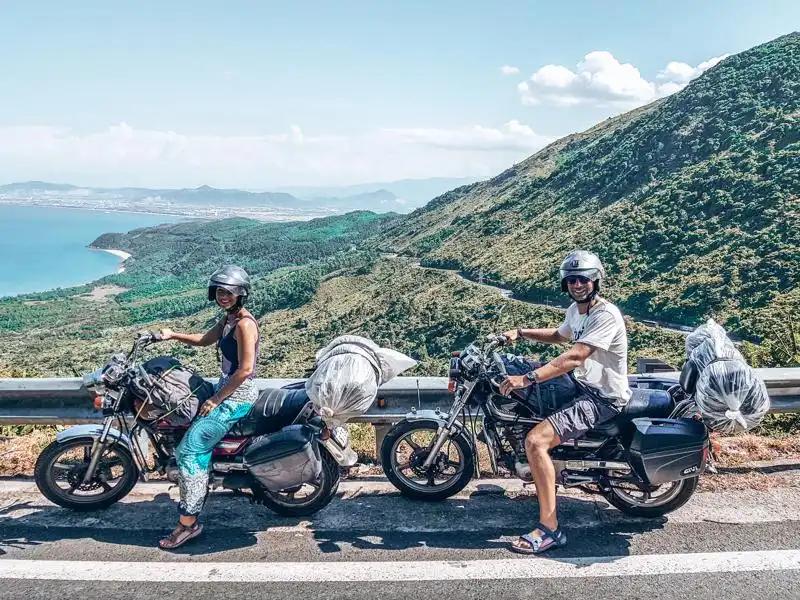
Skip ahead
What are the best attractions between Hue and Hoi An?
- Tam Giang Lagoon and fishing village
- The Elephant Springs at the Bach Ma National Park
- Lang Co Beach – one of the best in Vietnam
- The Hai Van Pass
- My Khe Beach (China Beach)
- The Marble Mountains
The two routes from Hue to Hoi An
Getting from Hue in Thua Thien province to Hoi An in Quang Nam province can take as little as three hours via car or bus, if you’re taking a direct route through the Hai Van tunnel. The tunnel, which opened in 2005, is the longest in South East Asia at over 6km long and has cut the journey time between Hue and Da Nang/Hoi An significantly.
But along with shortening the journey it has also removed the need to drive the Hai Van pass – and trust us you do not want to miss out on this! Named by renowned motoring show, Top Gear, as one of the best coastal roads in the world, this incredible stretch of road winds around and up the mountain, with lush greenery on one side and white sandy beaches on the other. It is right up there with the Ha Giang Loop in Northern Vietnam as the best bike ride in the country.
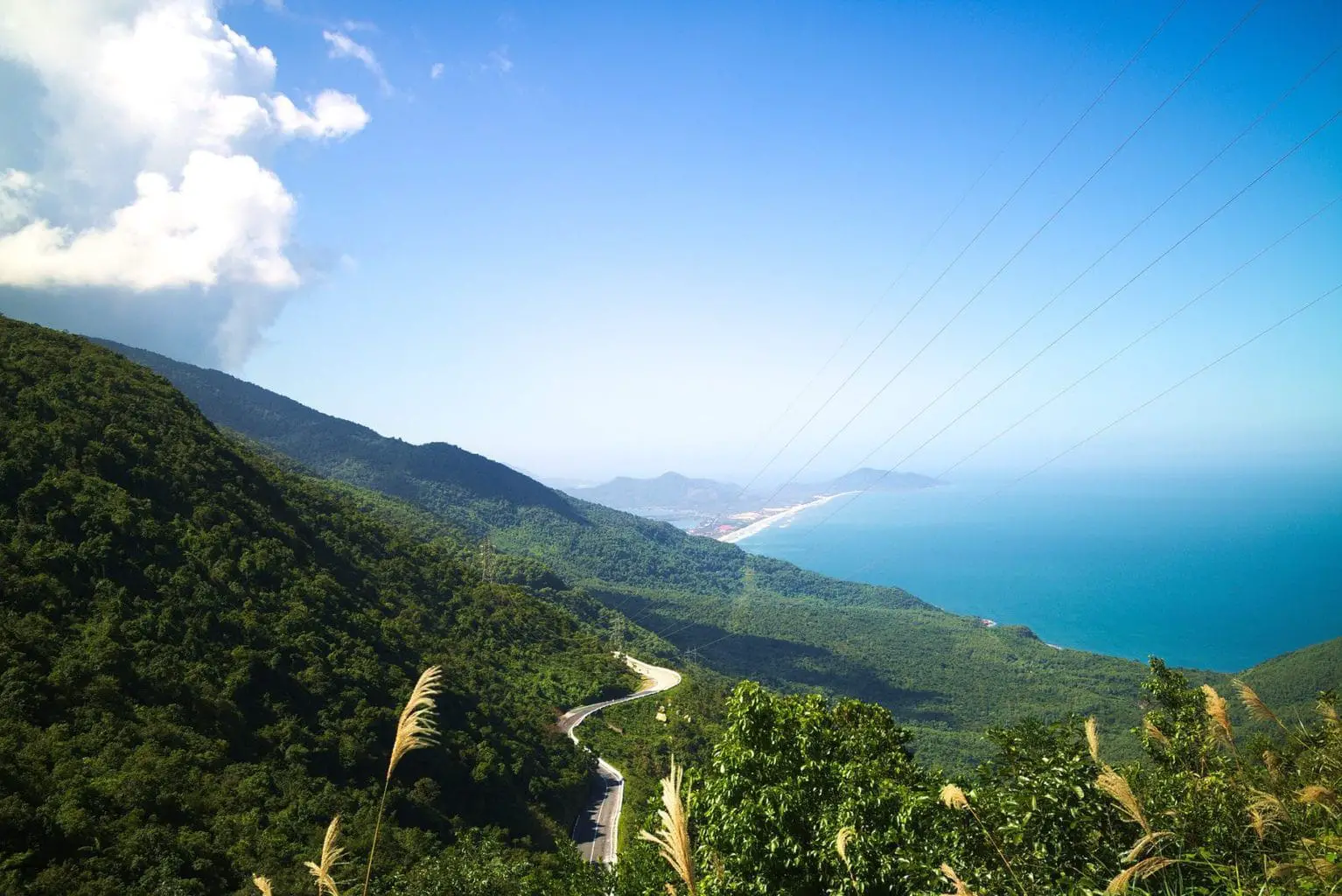
Since the construction of the tunnel, most cars, busses and trucks opt for the quicker route, leaving the picturesque pass for travellers wanting a day of adventure on the open road.
Read next: The ideal itinerary for 3 weeks in Vietnam.
Transportation Options
Since it’s a relatively short distance, there are a myriad of ways to get yourself from Hue to Hoi An. Let’s get into them:
Train
Hoi An doesn’t have a train station but you can take the train (4 hours duration) from Hue to Da Nang, and either transfer onwards via bus or private car/taxi.
The benefit of the train journey is that it also takes the Hai Van Pass, giving you the breath-taking scenery we described earlier. It’s also particularly cheap: 112,000 VND (approx. 4 GBP) at time of writing.
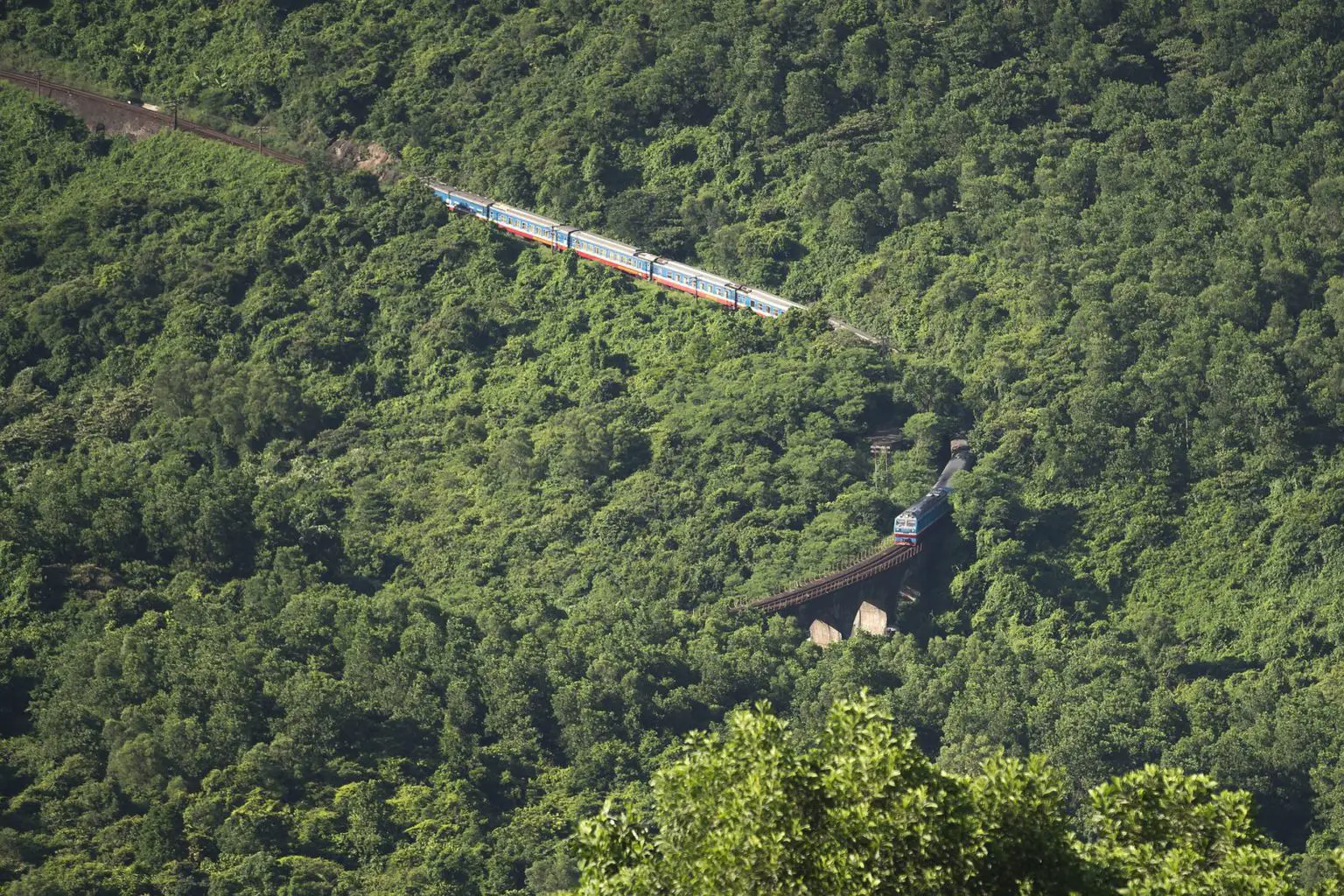
Bus
There are a number of bus operators doing the route from Hue to Hoi An, taking approximately 3-4 hours and costing about 130, 000 VND (4.50 GBP) at time of writing. The largest two vendors are Hanh Café and Sinh Tourist: we have used the latter and while the bus was slightly older, the check-in experience was good and the driver got us to our destination safely.
We wouldn’t recommend the bus however, since it goes through the tunnel and you miss out on the pass.
Shuttle Bus
You can travel in a little bit more style with the Hue to Hoi An shuttle bus. The luxury mini van service provides hotel pick up and costs at a cost of about 240,000 VND (8.50 GBP) per person, this is a good option if you’re looking for convenience.
You can book the shuttle here.
Private Car
If you’re looking for supreme comfort, this is the option for you. Generally you can book a private transfer with an English speaking driver that does a similar itinerary to the motorbike tour (see below), including Lang Co beach, the Hai Van Pass and the Marble Mountains in Da Nang.
Of course, as with all things superior, it comes with a heftier price tag. From approx. 1,200,000 VND (40 GBP) to 1,700,000 (60 GBP).
Motorbike
As we said above, this article makes a very strong recommendation for taking the trip from Hue to Hoi An on two wheels. Of course, there is a consideration on whether you want to navigate yourself, or take an ‘easy rider’, on the back of a motorbike piloted by a professional driver.
Motorbike – Self-Drive
If you do take a motorbike, you can use the itinerary below as a guide – allow about 4 hours of just driving time, plus whatever you’ll want for stops in between. Our tour took 8 hours in total.
In terms of road conditions, the road between Hue and Hoi An is paved as it is a highway but of course the pass itself has some very steep sections and some hairpin turns to consider. If you haven’t driven a motorbike before or aren’t confident, please go for the Easy Rider option!
Motorbike – Easy Rider
Although James is relatively comfortable pottering around towns on a moped, we opted for the Easy Rider option. It gave us both the comfort of experienced drivers along with the chance to properly view the countryside and sights – rather than concentrating on the road.
If you’re not familiar with the concept of ‘Easy Rider’, the clue is in the name. You sit on the back (as a rider) of a motorbike in sheer, easy comfort, as a highly experienced driver takes around.
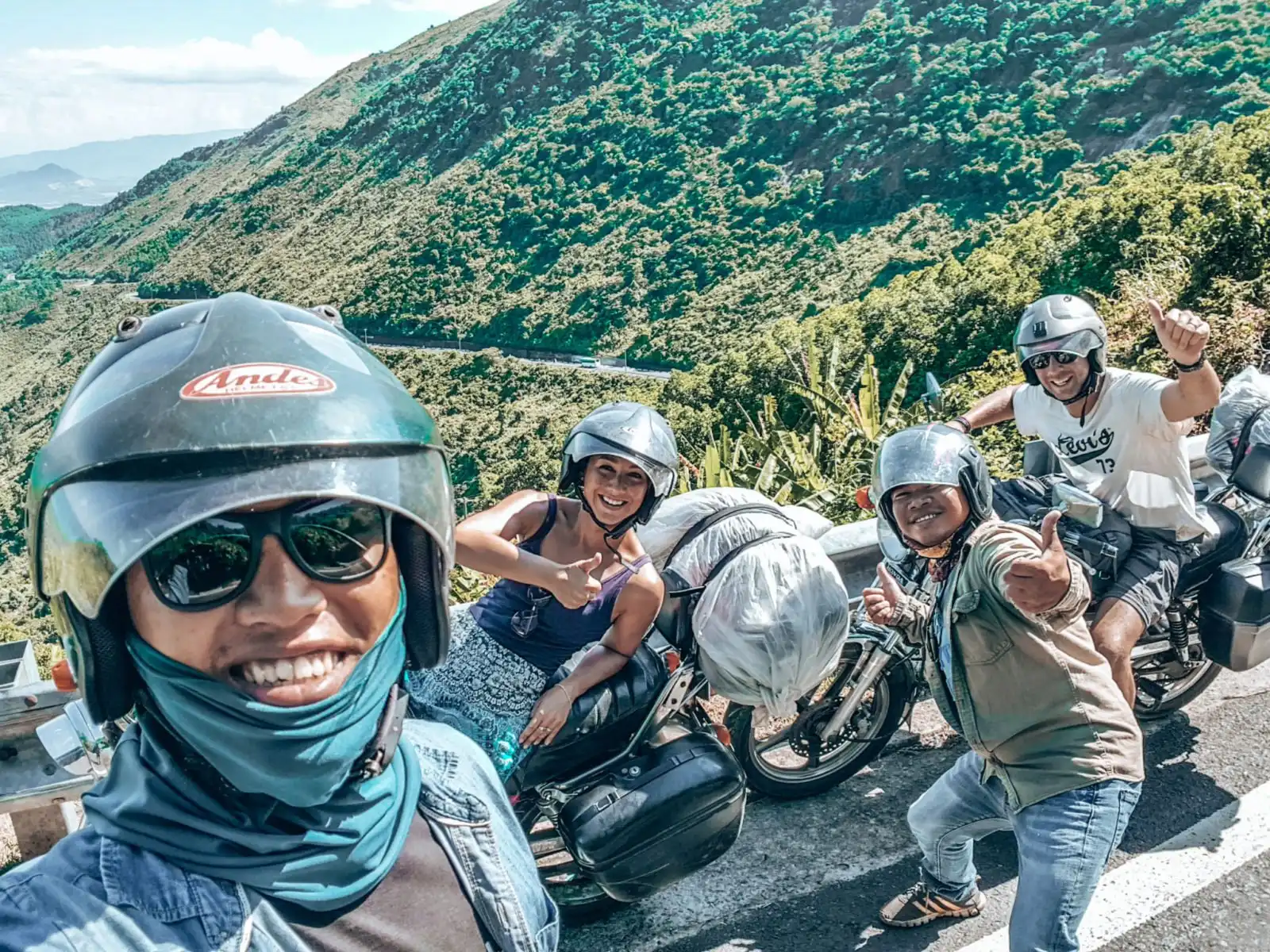
We booked our transfer with Hue Adventures, based solely on their Tripadvisor ratings. It was the right decision and we would highly recommend this operator, at a current rate of 45 USD (about 37 GBP) per person.
If you aren’t comfortable in spending the day on a bike, then why not instead do the same Hue to Hoi An (or vice versa) tour of the Hai Van Pass in the back of an Army Jeep?
Hue to Hoi An itinerary
Pick up and loading
It’s a bright and early 8.30 am when our drivers, Nhat and Lai, pull up to the gates of our hostel. Dressed in full biker regalia, these guys look cool as anything, and as the day goes on, they fully live up to this reputation. Consummate professionals with a wry sense of humour and charisma in spades, we already know we are in safe hands.
Their first mission is to assess the luggage. We don’t quite travel light – we are travelling the world for a year – so we were a little concerned at first about how our luggage would make the journey. When we showed our drivers, they shrugged it off. Two adults, two huge Osprey rucksacks and two heavy day packs? No problem!
After wrapping the backpacks in plastic protective bags, they strapped them to the back of our bikes (we’ll explain why this was an added bonus later) and then attached our front packs over the gas tanks.
All loaded up, helmets checked and a quick intro into the day we were on our way out of the city.
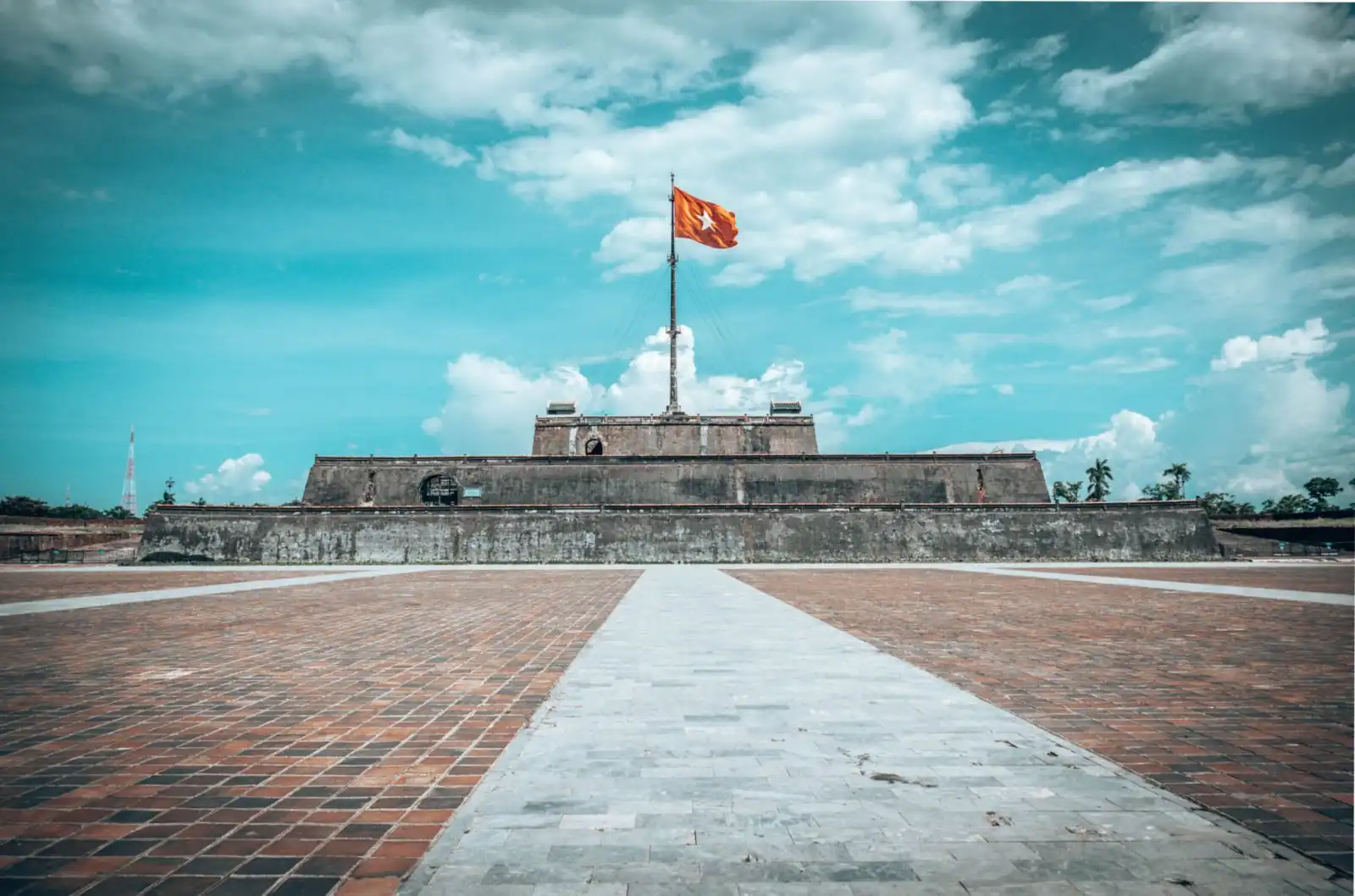
Don’t fear if you’re even heavier packers than us. If they can’t attach your luggage to the bikes, they provide a free service to take your luggage to your hotel.
Rice Fields
After around 20 minutes driving out of Hue city, our drivers stopped on a road dissecting stunning rice fields. Firstly, they wanted to check that we were comfortable. The answer was a resounding yes. If you remember, we mentioned that the backpacks were strapped to the back of the bike? This turned out to be more than mere convenience, since these acted as a comfy backrest for you to recline against. The bikes do have their own backrest but the packs just provided that little extra support.
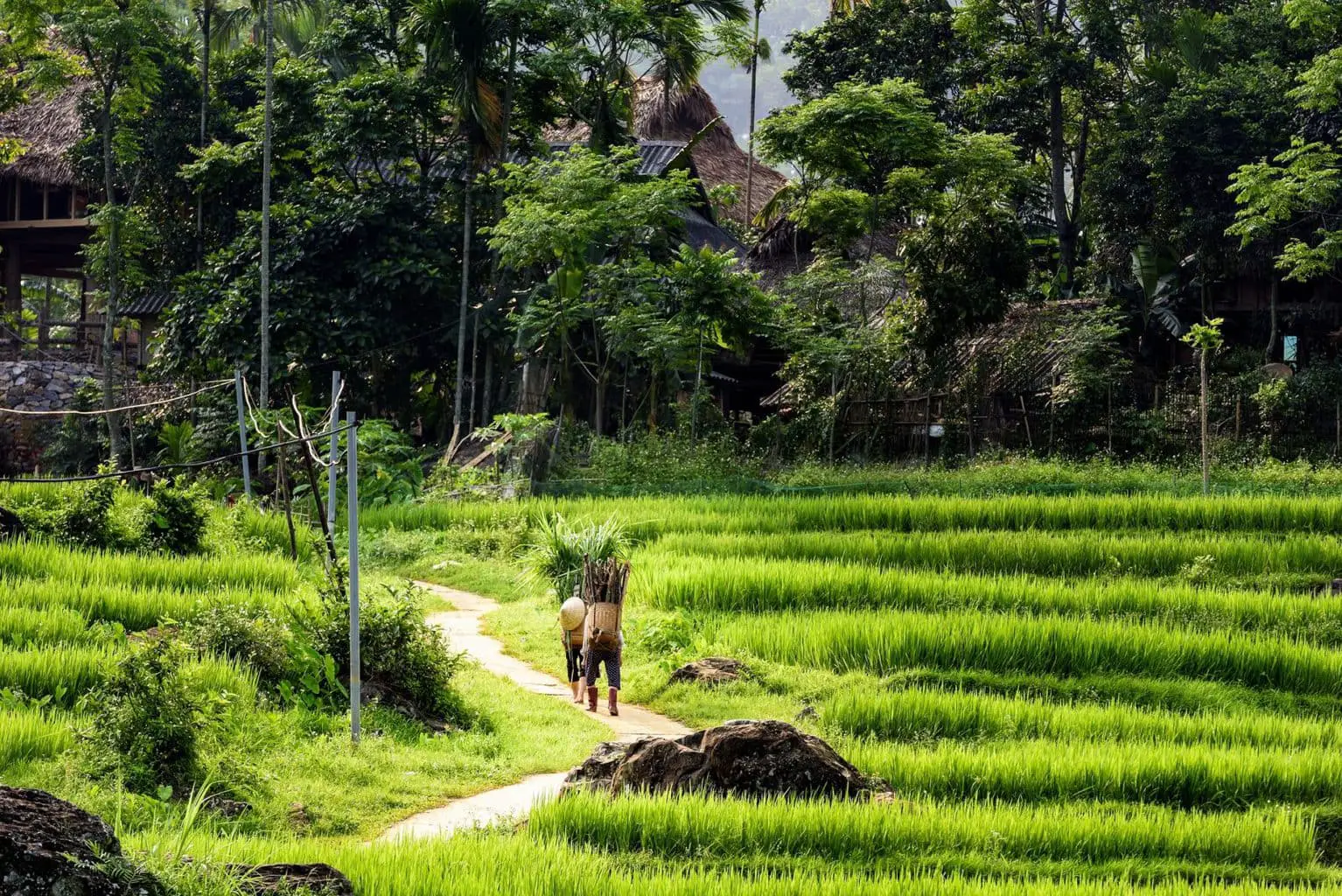
Nhat then chatted us further through the itinerary for the day, what to expect and look out for… and we had a pretty interesting chat about some history of the country. Where we had stopped was particularly poignant since in the middle of the rice fields were two fortified bunkers; a stark reminder of the Vietnam War and what the people of the country had been through.
The Fishing Village
Another 30 minutes into our journey between Hue and Hoi An, we arrived at the largest lagoon in Vietnam, the Tam Giang Lagoon, and dodging potholes and other mopeds, visited one of the fishing villages that dot its coastline.
Over the last few years, the government have provided many of the fishermen land to build homes, but many families still live and work on small fishing boats. It’s amazing to see how some families go about their daily lives but is also a quick reminder on how poor so many of those who live just off the tourist trail are. This is a hard life.
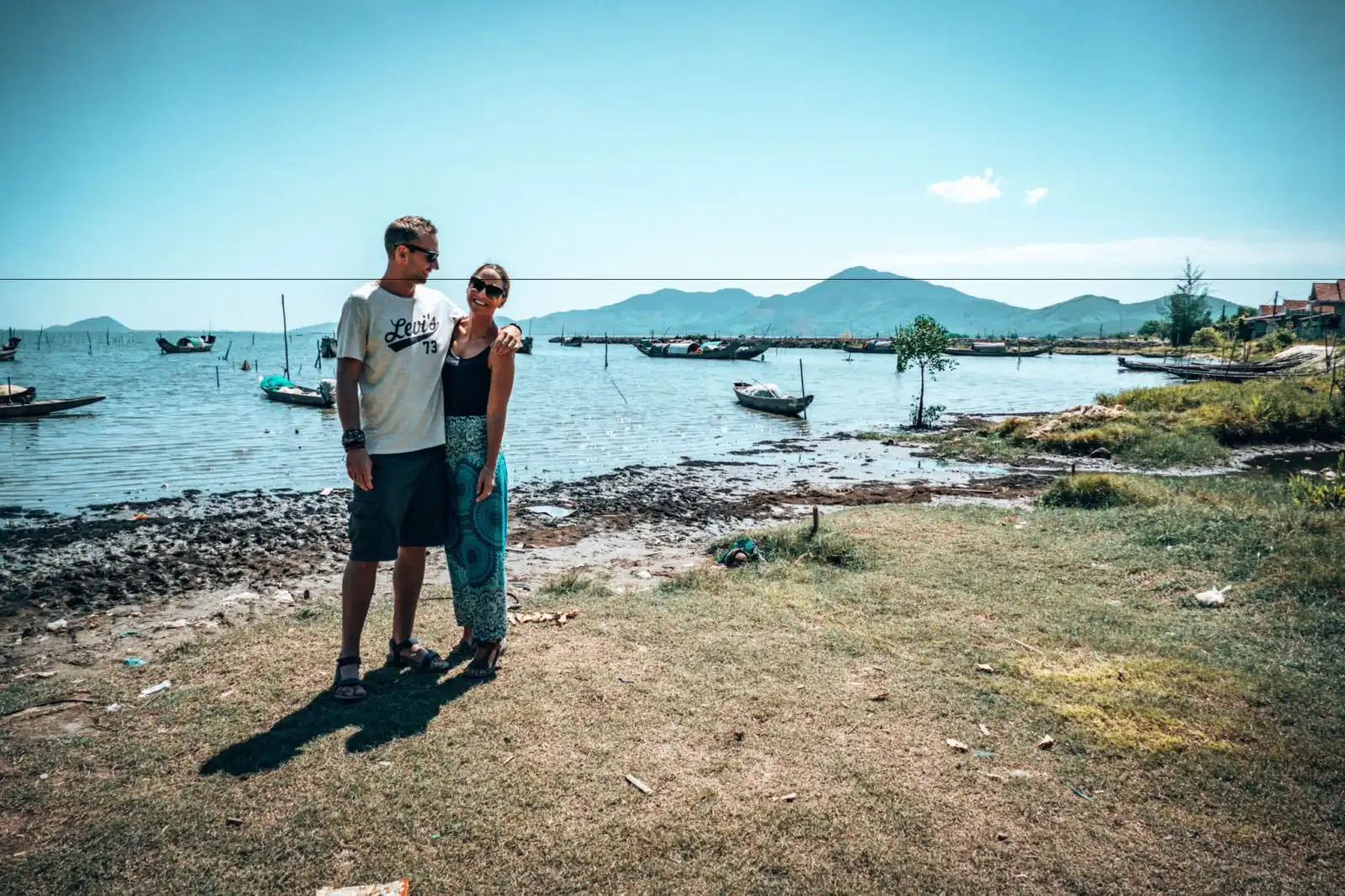
A quick tip: if you are staying in Hue, we were told that this lagoon is a great place to capture some cracking sunrise and sunset shots. And being only 15km outside the city, it’s definitely worth the trip.
The Elephant Springs
Another 15km or so away from the fishing village, and along some rather bumpy roads we arrived at our next destination. We did this trip in July, and to say that the temperatures in Vietnam were hot is an understatement. So we were pretty happy when we arrived at our next stop: our first opportunity to swim.
The Elephant Springs – aptly named because of an elephant-shaped rock – are nestled in the Bach Ma national park, and provide immediate relief from the unrelenting sun.
These are not the most impressive springs we’ve ever seen but rather a good set of natural rock pools and diving points that will keep you cool and offer you a chance to hydrate and relax before your next leg of the journey.
We travelled in the middle of local Vietnam holidays but were surprised that the place wasn’t too overcrowded. Yes, it was definitely a little busy, but with enough space for us to leave our belongings in a hut and head down to swim in the cool water. There are also a number of places to buy snacks and, of course, drinks.
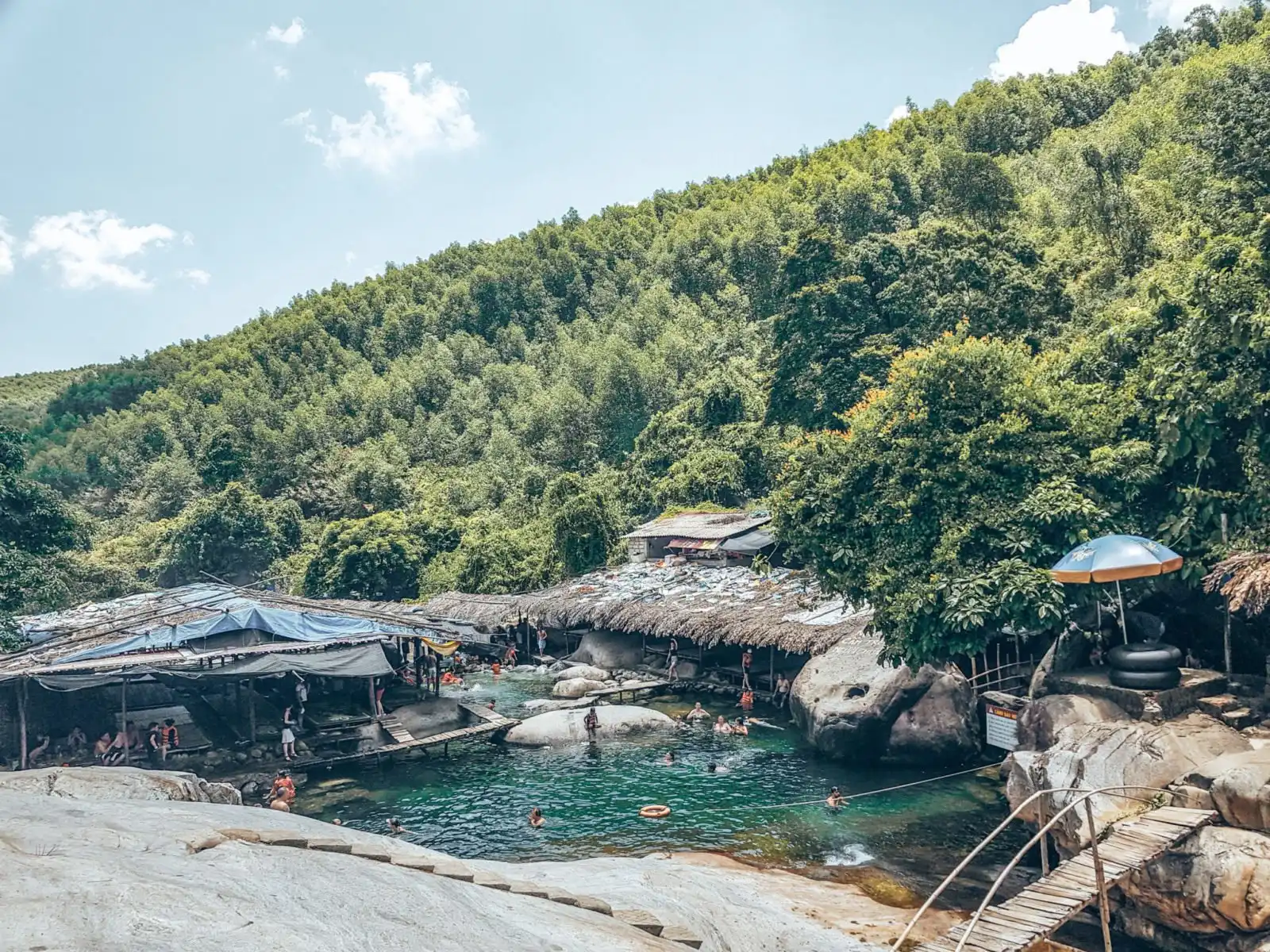
We also found the Falls to be quite social: there are usually quite a few people doing the same itinerary on their bikes, so we met many fellow travellers in the refreshing waters, while downing a beer or two.
It’s worth noting that the rocks are very slippery at the waterline, so as graceful as it may seem – better to slide in on your butt. And there is also a park entrance fee, but at 17,000 VND a person it’s quite the snip.
Lang Co beach
This was without doubt the best place that we ‘stopped’ on our journey, and potentially our best lunch spot in all of Vietnam! Another 30 minutes ride away (you’re probably getting the picture here, that you generally don’t spend more than half an hour on the bike without a rest), we arrived at Lang Co beach.
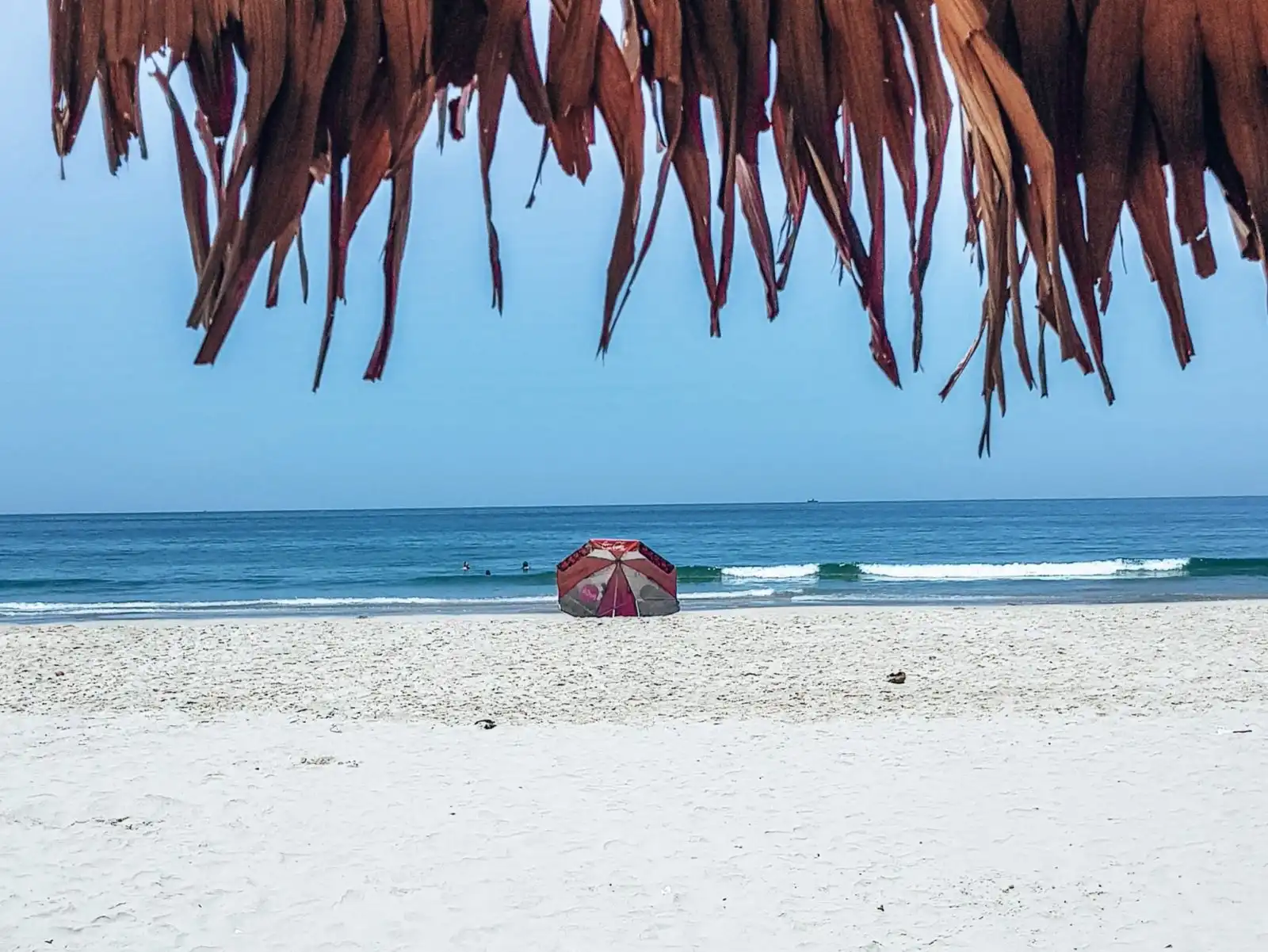
Piping hot white sands, bright blue ocean waters and private beach huts to slurp down some seafood, Lang Co beach is absolutely beautiful. It’s also quite deserted, giving you an almost untouched ocean view to take in.
On arrival, Nhat introduced us to the waiting staff, and we were ushered onto our private terrace, brandishing menus full of delicious seafood and local Vietnamese options. We were expecting exorbitant, inflated tourist prices but were pleasantly surprised as our meal of prawns, fried rice and a few drinks come to just over 250,000 VND (8.75 GBP).
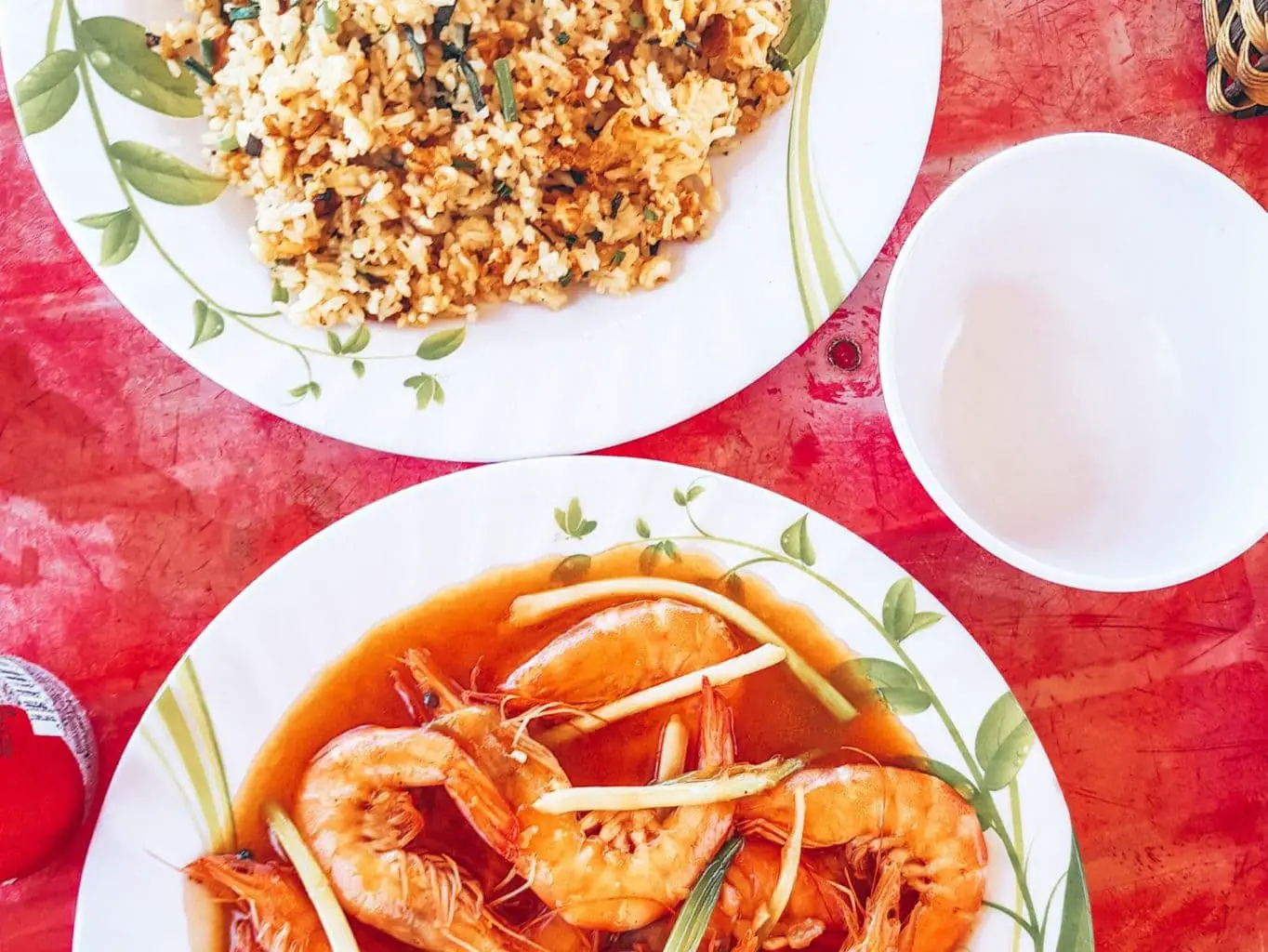
The restaurant had showers (they are basic), but this was a huge benefit as it mean not being sandy or salty for the rest of the day.
The Hai Van Pass
Bellies full, relaxed and rejuvenated from the beach stop, we were on to the highlight of the day: the Hai Van Pass. If you haven’t already heard of the Hai Van pass, it’s worth having a look at this quick snippet from the Top Gear Vietnam special. Our photos really just don’t do it justice, since it is absolutely stunning.
In the words of Top Gear, the 20km pass is “a deserted ribbon of perfection, one of the best coast roads in the world”. And it is still relatively deserted, only dotted with other avid bikers and easy riders racing around it’s exhilarating bends.
We stop at the top, about 11km in, to check out some old ruins and gun embankments also left over from the Vietnam war. This area seems to be a little busier when we visited, as there are a number of tour busses. For this reason, we don’t wait long and head off quickly back on the road towards Da Nang.
Descending is just as thrilling as the ride up, as you hug the curves of the road, breathing in the salty sea air as the trees whip past your ears. If you aren’t too experienced with motorbikes, this will be the experience of a lifetime – entirely safe but stimulating all the senses.
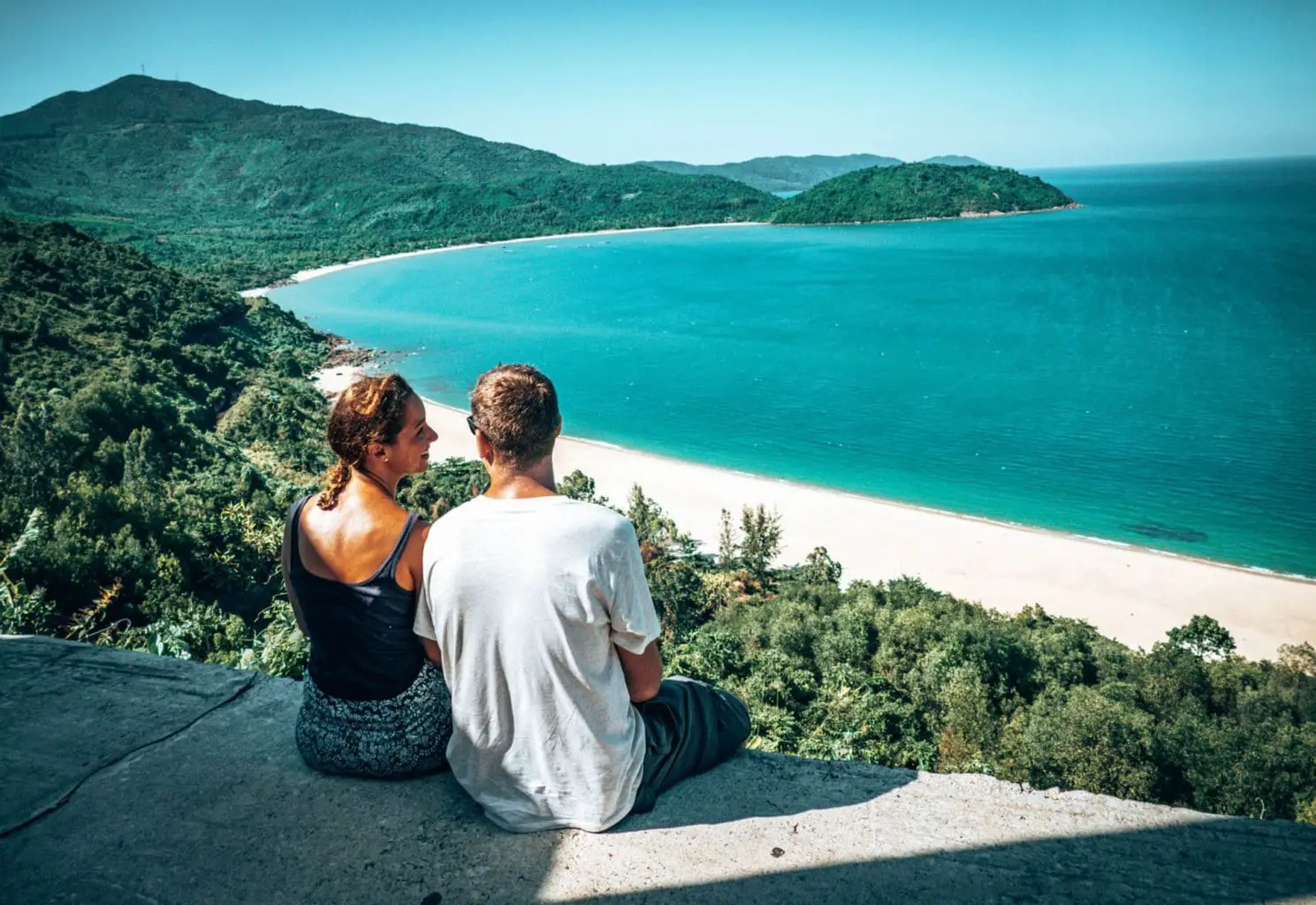
We stop a few more times for Nhat to play Instagram photographer for us (a job that, like everything else, he is remarkably good at) and just like that the ride of our lives is over.
My Khe Beach (China Beach)
Driving through Da Nang, Vietnam’s third largest city, we pass a number of high rises, before what has to be one of the most extensive fishing fleets we have ever seen. They are stationed near My Khe Beach, also known as China Beach.
The nickname came from the American troops who used to use it as a popular hangout during the war. Considered one of Vietnam’s finest beaches, it’s 30km of pristine white sand but, more than sunbathing, is also great for surfing.
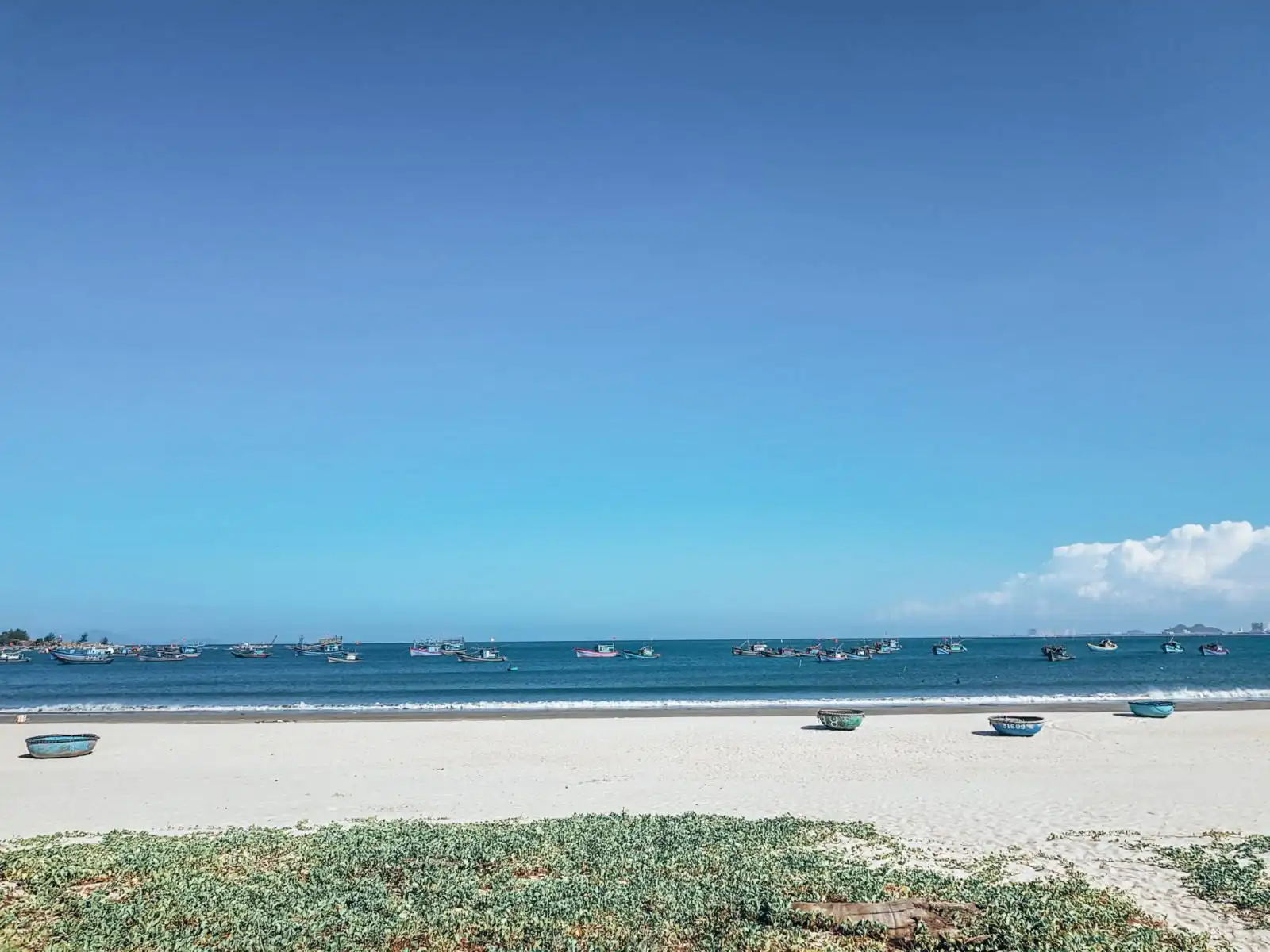
The Marble Mountains
The final stop of the day, the Marble Mountains are 5 limestone and marble hills near Da Nang (unfortunately not near the Golden Bridge, which we didn’t get to see).
Named after the 5 elements (wood, metal, water, fire and earth), you are able to climb (or take the elevator) up Thuy Son – or the Water Mountain. If you decide to walk it’s only 150 odd steps to the summit. So not too strenuous, but after a day on the back of the bike we decided to take the lift.
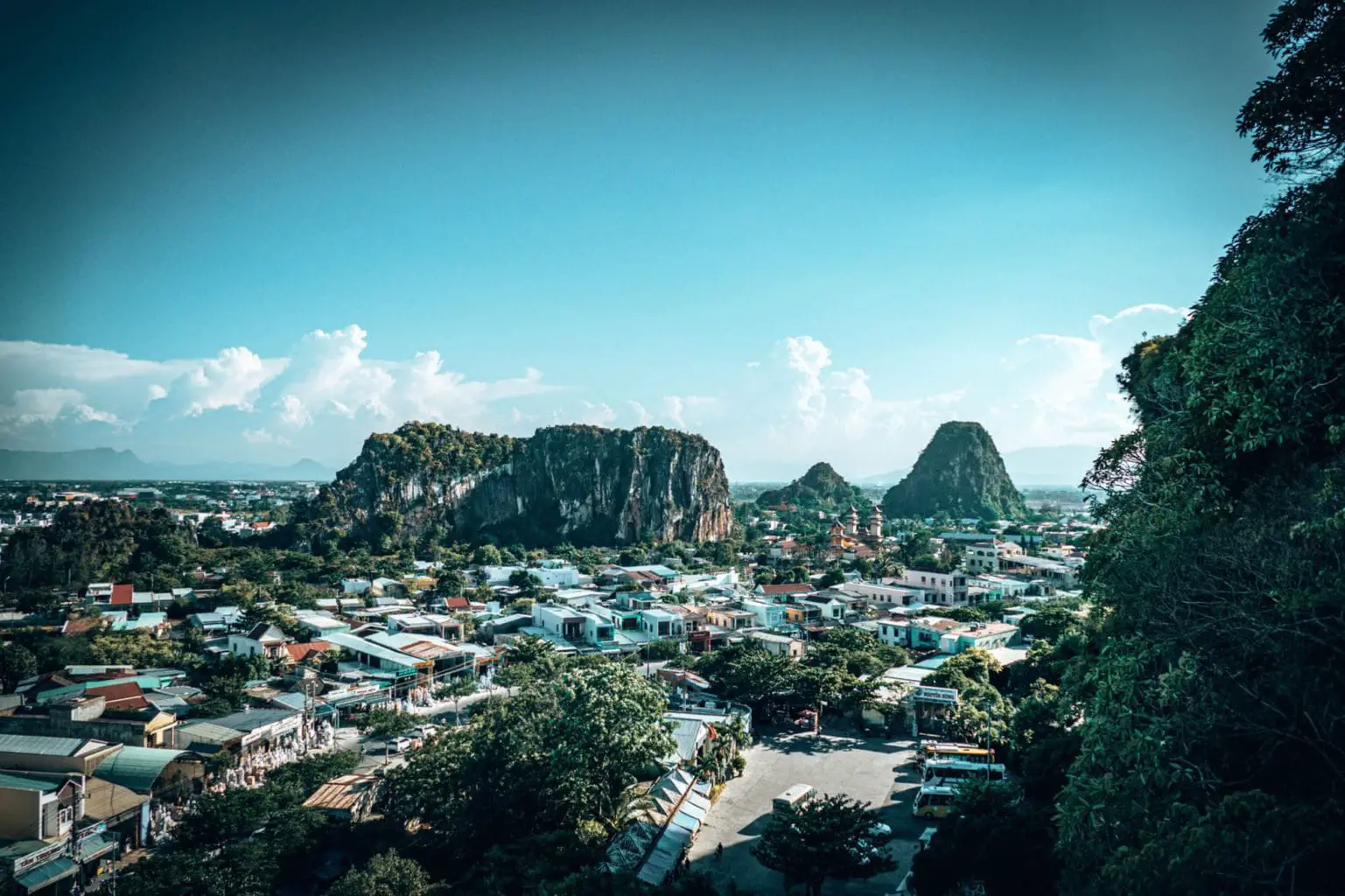
Thuy Son is the only mountain that you can go up, but you are able to walk through the system of caves and tunnels that were used during the Vietnam war. There are some amazing carving and sculptures to see, with both Buddhist and Hindu temples on the mountain.
It’s 40,000 VND (1.50 GBP) for entrance to the Mountains and an extra 15,000 VND (0.50 GBP) for the comfort of taking the lift up.
Arrival into Hoi An
Just like that our day is over, as we cruise into the ancient city of Hoi An at around 5 pm. Our drivers drop us at our hotel doorstep, making sure we’re safely in with our luggage before swinging back onto their bikes and off back to Hue for the evening.
At this point it’s been a pretty long day but it’s been totally worthwhile: one of the best experiences we’ve had in Vietnam and a must-do on any Vietnam itinerary!
When to go
We think that the best time of year to do the motorbike tour from Hue to Hoi An (or Hoi An to Hue) would be between April and August. The earlier the better in these months, with July and August getting pretty hot, but most important to us was that it was dry season, as we didn’t want to be out in the rain for the entire day.
It’s also worth noting that Vietnam school holidays are between July and August so accommodation may become more expensive.
As typhoon season runs from September to December you should definitely avoid these months. And January to March will be cooler, but there is a good chance that you’ll get a rain shower or two.
Where to stay in Hue
Luxury: Vedana Lagoon Resort – The town isn’t known for it’s luxury hotels but this one would get our vote. It’s further out, set on a lagoon, but is worth it for the views alone!
Mid-range: Scarlett Boutique Hotel – In walking distance of everything you need, the Scarlett will give you a taste of luxury on a smaller budget.
Budget: Shark Homestay – This small little homestay is in the heart of the tourist area with heaps of bars and restaurants on your doorstep. We stayed here and it’s slightly basic, but has a lovely staff contingent and is hugely affordable!
Where to stay in Hoi An
Hoi An is crammed with amazing places to stay, and there are heaps of great hotels in Hoi An Old Town particularly. A few of the best are:
Luxury: Four Seasons Nam Hai – Push the boat out! Friends of ours stayed here when we were in Hoi An, and they raved about the attention to detail, the incredible gourmet spreads and the sheer luxury of this resort. It’s a bit further out of time, but easily accessible via taxi.
Mid-range: East West Villa – this villa just out of town is one of the best value for money places and Hoi An hotels around. Incredible suites, delicious breakfast and a refreshing swimming pool. They did have issues with WiFi when we stayed so if this is important to you, perhaps give them a skip.
Budget: Palmy Villa – it’s not entirely budget (like a hostel) but the Palmy Villa is amazing value in Hoi An. We stayed here for a few nights and it has the feel of a villa, with impeccably clean rooms and a great pool, but at a bargain basement price.
So what do you think of our guide to the best way to travel from Hue to Hoi An? Would you opt for the motorbike option or even travel the route in the back of an Army Jeep? Let us know in the comments below or drop us an email if you’d like any more information.
And just in case you’re travelling around Vietnam, and need some more guides and tips, here is our travel guide for Hanoi, and why you should choose Bai Tu Long Bay over Ha Long!
What camera equipment and other gear do we use?
We’re living proof that you don’t need the most expensive gear to travel the world and take good photos. Here are some of our must have items that make it into the packing list for all our travels.
- Main Camera: Panasonic Lumix FZ1000
- Drone: DJI Mavic Air – Fly More Combo
- GoPro: Hero 7 Black
- GoPro Dive Case: Go Pro Housing
- GoPro Case: Smatree GoPro Carry Case – Small
- Packing Cubes: Eagle Creek Packing case
- Backpack: Osprey Farpoint 70
- Powerbank: Anker Powercore
- Phone: Xiaomi Mi 9
- Hard drive: Transcend Slim Storejet 2TB
- Laptop: Lenovo IdeaPad 720s
- Headphones: Bose Quiet Comfort 35
- Wifi Hotspot: GlocalMe G4
Want to save this for later? Why not pin it…
